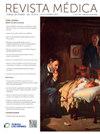Enfrentamiento actual del nódulo tiroideo
IF 0.4
Q4 MEDICINE, GENERAL & INTERNAL
引用次数: 0
Abstract
A thyroid nodule is a lesion structurally distinguishable from the thyroid parenchyma and is highly prevalent in the general population. Its detection has increased due to the widespread use of cervical ultrasonography. Although most nodules are benign, approximately 7–15% may correspond to cancer. The initial evaluation includes a detailed medical history, an assessment of risk factors, and a physical examination focused on signs of thyroid dysfunction or malignancy.
Thyroid ultrasound is the diagnostic method of choice due to its accuracy, safety, and low cost. Certain sonographic features allow estimation of malignancy risk, classified through systems such as TI-RADS. TSH measurement helps determine the functional status of the nodule.
Fine-needle aspiration biopsy (FNAB), guided by ultrasound, enables cytological analysis according to the Bethesda System (categories I–VI), which informs clinical management. For nodules with indeterminate cytology (Bethesda III and IV), molecular studies provide predictive value for malignancy.
Therapeutic decisions must consider the patient's age, comorbidities, the nodule's sonographic and cytological characteristics, and patient preferences. Management options range from ultrasound monitoring to surgical or ablative treatments.
In conclusion, the approach to thyroid nodules is based on an integrated and sequential strategy, guided by diagnostic tools and updated clinical guidelines, aimed at achieving personalized and safe decision-making.
甲状腺结节的当前处理
甲状腺结节是一种结构上与甲状腺实质不同的病变,在一般人群中非常普遍。由于宫颈超声检查的广泛使用,其检出率有所增加。虽然大多数结节是良性的,但约有7-15%可能与癌症相对应。最初的评估包括详细的病史、危险因素的评估和甲状腺功能障碍或恶性肿瘤体征的体格检查。甲状腺超声是诊断方法的选择,因为它的准确性,安全性和低成本。某些超声特征允许恶性肿瘤的风险估计,通过系统分类,如TI-RADS。TSH测量有助于确定结节的功能状态。超声引导下的细针穿刺活检(FNAB)可根据Bethesda系统(I-VI类)进行细胞学分析,从而为临床管理提供信息。对于细胞学不确定的结节(Bethesda III和IV),分子研究提供了恶性肿瘤的预测价值。治疗决定必须考虑患者的年龄、合并症、结节的超声和细胞学特征以及患者的偏好。管理选择范围从超声监测到手术或消融治疗。总之,在诊断工具和最新临床指南的指导下,甲状腺结节的治疗方法是基于一个综合的、顺序的策略,旨在实现个性化和安全的决策。
本文章由计算机程序翻译,如有差异,请以英文原文为准。
求助全文
约1分钟内获得全文
求助全文
来源期刊

Revista Medica Clinica Las Condes
MEDICINE, GENERAL & INTERNAL-
CiteScore
0.80
自引率
0.00%
发文量
65
审稿时长
81 days
 求助内容:
求助内容: 应助结果提醒方式:
应助结果提醒方式:


